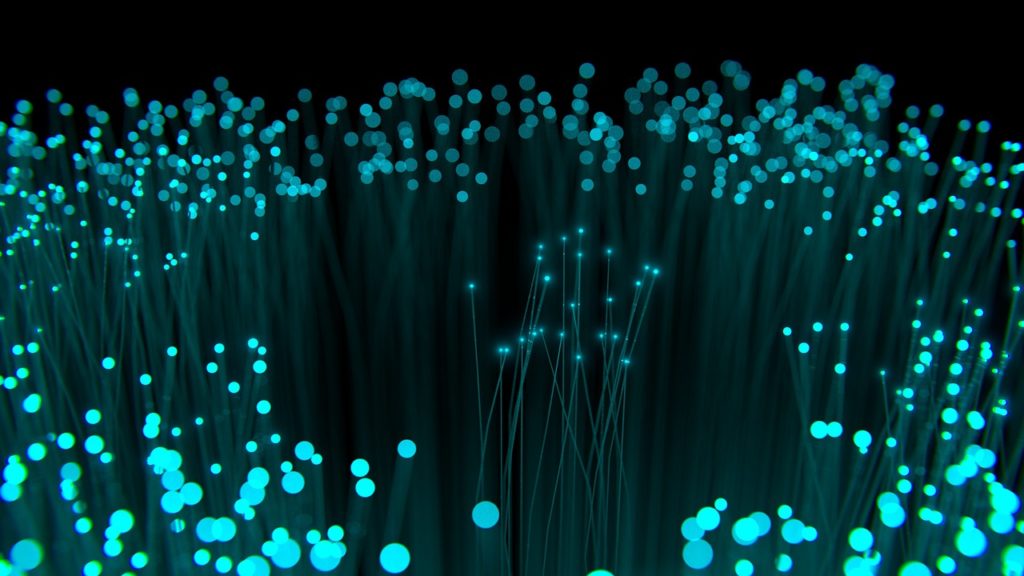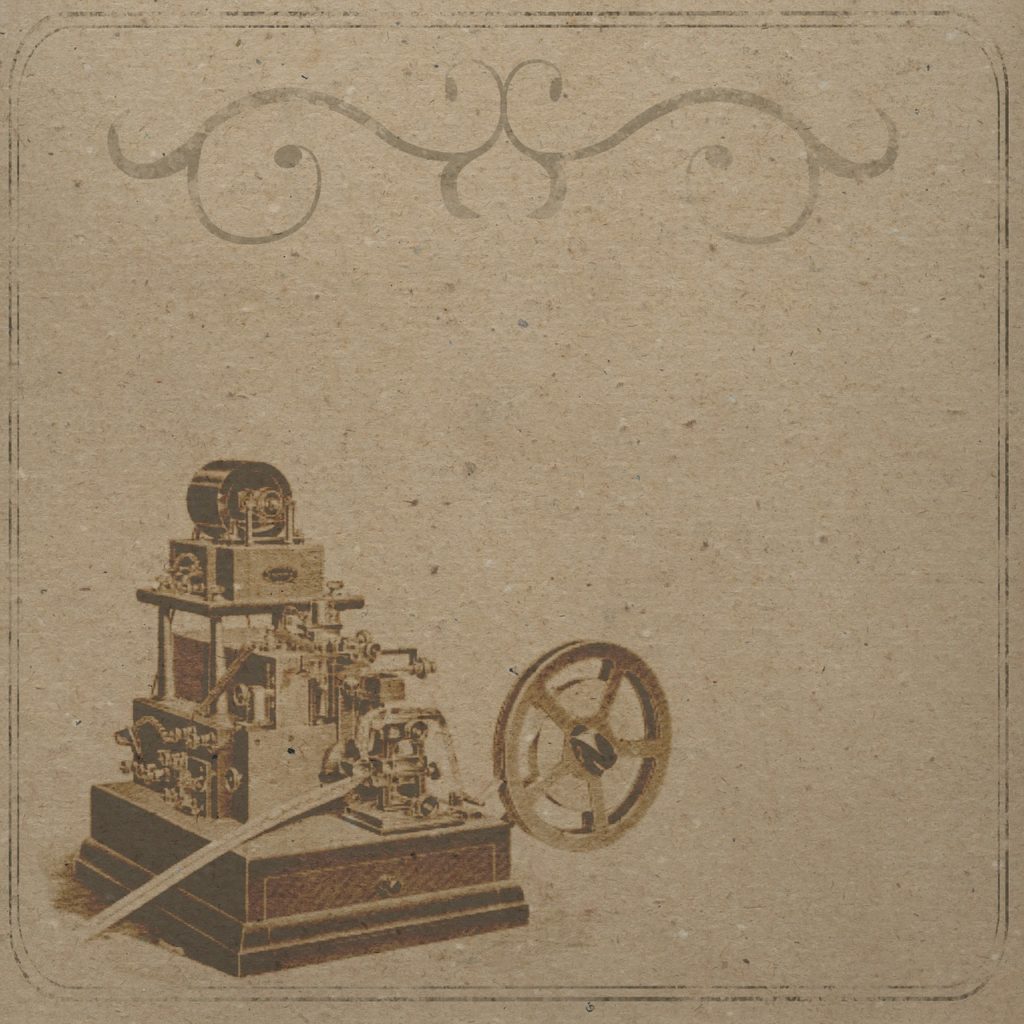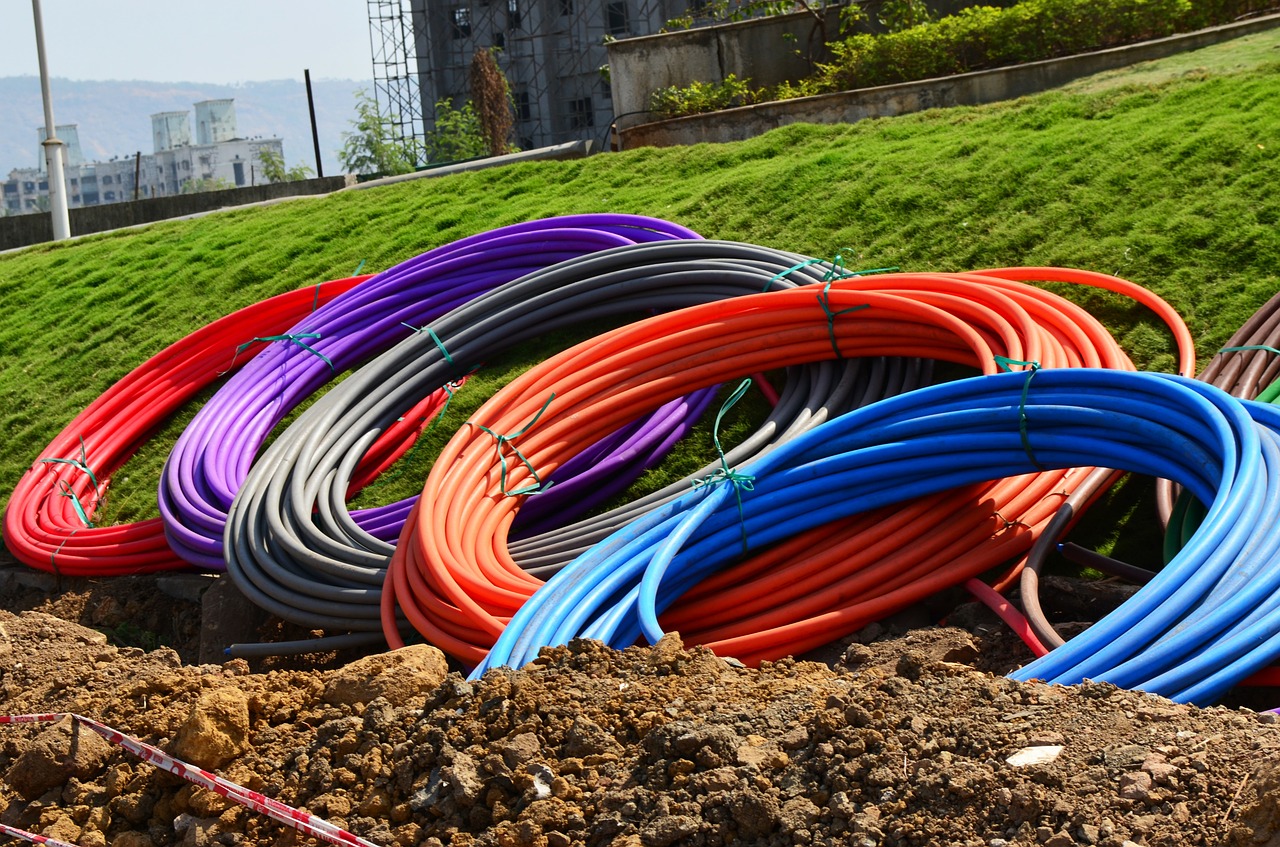One of the primary components of telecommunications infrastructure is fiber optic cable. Nearly all of the world’s international data travels through 350 undersea cables stretching more than 550,000 miles. Almost every nation on earth is connected by this fascinating feat of engineering that powers the Internet, telephone systems, and cable television.
What Is a Fiber Optic Cable?
Fiber optic cables are used to transmit data across great distances. The cable consists of three main parts: the core, coating, and cladding.
The core is the glass or plastic center of the cable through which light travels. The cladding is a glass tube that is wrapped around the core to reduce refraction of the light signals that are sent through the core, ensuring clean delivery of data. The cladding is also what makes it possible for the light signals to travel through bends in the fiber optic cable. The outermost layer is the coating, which provides external protection for the cable and often includes several sheets of plastic.

The size of a fiber optic cable is often presented as a ratio of the diameters of these three parts. Cables laid in shallow water are often about the thickness of a soda can, while deeper water cables are thinner because cables face fewer threats in the deep ocean.
What Do Fiber Optic Cables Do?
Fiber optic cables transmit data through pulsing lights. A single mode fiber generates light with a laser. Alternatively, a multimode fiber uses an LED for light generation.
Single mode fibers can move more information more quickly, but multimode fibers are more affordable. Thus, single mode is most often used for long-distance cables (like the ones that connect the continents) and shorter lines are more likely to use multimode fiber.
History of Fiber Optic Cables
In 1858, the world’s original transatlantic telegraph cable was completed. The undersea cable ran between Ireland and Newfoundland, Canada. It took more than 17 hours to send a message and the cable only lasted about 30 days.
The telegraph cable was followed by the telephone cable, and eventually fiber optic cables were laid on the seabed to support Internet traffic. The first non-experimental fiber optic communications link was used by police in Dorset, England, in 1975.

Companies, most often telecom giants, began laying fiber optic cables in mass in the 1990s during the Internet boom. More recently, companies like Google and even Facebook have started to invest in this infrastructure.
How Fiber Optic Cables Are Laid
Special ships called cable layers launch from coastal stations to dig trenches and bury fiber optic cables. This process is long, labor-intensive, and expensive—often costing hundreds of millions of dollars.
Before the ships load up the cable and depart, a cable operator makes a plan for where the cable will be laid. This requires a map of the geography of the ocean floor in order to avoid obstacles like coral reefs and large elevation changes.
Most cable-laying ships can carry around 1,250 miles of cable at a time. The process of bunching these cables together and loading them into a cable-layer’s cargo hold can take almost a month.
To begin, a section of the cable is attached to a coastal landing station and stretched out several miles into the ocean. The ship then attaches its cable to this end of the starter cable and feeds it into a device called a plough. The plough digs a trench in the ocean floor and lays the cable inside of it.
These ships can lay an average of about 60 to 125 miles of cable each day, depending on the terrain and the size of the cable.
Accidents Happen
Despite every effort to protect fiber optic cables under the ocean, they face many threats, including marine life, earthquakes, and boats.
Undersea creatures like barracudas and sharks have been known to chew on the cables, which can cause major damage and disruption. To solve this problem, Google is planning to coat its new fiber optic cables in a synthetic polymer that’s similar to the material used in bulletproof vests.
Because cables are vulnerable to attack by spies and terrorist groups, the exact location and path of the cables is not usually made public. This results in the occasional ship anchor that damages a cable when dropped or dragged across the sea floor. In 2012, a ship dropped anchor off the coast of Africa and cut a major cable, dramatically reducing Internet speeds in the Middle East and East Africa.
Natural disasters can also present a threat to the operation of an undersea cable. Taiwan has suffered connectivity outages when earthquakes and typhoons have caused underwater rockslides that crush the cables.
The Future of Fiber Optic Cables
Multiple fiber optic cable projects are underway now, including what will be the world’s longest fiber optic cable stretching through the Arctic Ocean. This area was previously thought to be inhospitable to undersea cables because of the abundance of sea ice. As climate change has caused sea ice to retreat, the Arctic is opening up to telecommunications links.

